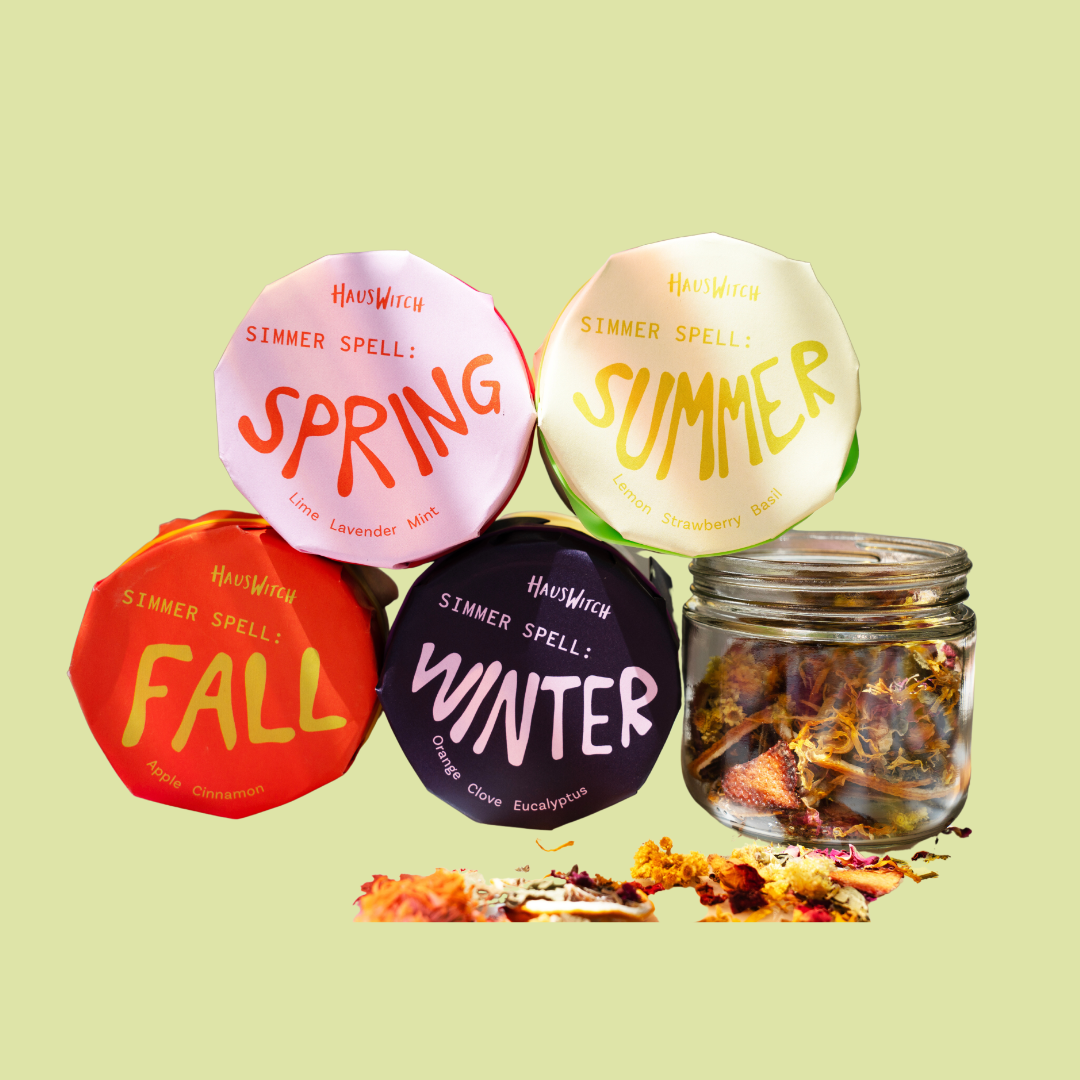 Welcome witches, it's time to get schooled. On witchcraft, that is. A book report you actually want to read and one I actually wanted to write. After digging through vintage books in our very favorite store (Hauswitch, duh) the universe handed us Marika Kriss's Witchcraft: Past and Present, first published in 1970 for The Millions Series by Sherborne Press. Other titles in the series include topics such as numerology, alchemy, American Indian religions, charms, spells, and curses and oh, so much more!
Welcome witches, it's time to get schooled. On witchcraft, that is. A book report you actually want to read and one I actually wanted to write. After digging through vintage books in our very favorite store (Hauswitch, duh) the universe handed us Marika Kriss's Witchcraft: Past and Present, first published in 1970 for The Millions Series by Sherborne Press. Other titles in the series include topics such as numerology, alchemy, American Indian religions, charms, spells, and curses and oh, so much more!
Strap yourselves onto your broomstick because we’re about to travel through time, short and sweet style. There is an incredible amount of information in Kriss’s book, but we’ll be focusing on the most fun facts of the bunch—witch history and its many forms throughout different countries, cultures, and time periods.
In essence, witchcraft has been around since the beginning of time and human survival. Witchcraft was used to ensure fertile soil and an abundant agricultural year. Witches were vital for survival during this time when it was difficult to survive in Mother Nature's environment. The witch of a village dealt with births, death, health, weather, gods and goddesses, the success of their hunters, and health of their cattle. In small enough villages there was only need for one practicing full-time witch. However, witches, with their own unique range of abilities, in most cases became specialized. Voodoo priests were born with some abilities, but developed others after many years of learning. There are both healing and blighting witches, both just as important. Also known as curanderos, brujos, shamans, parcheros. In all cases, a witch, or perhaps better named as naturalists revered, worshipped, and studied nature and the intertwining relationship between the spirit of all living things.
Montezuma II sent a band of blighting witches to Cortes with instructions to curse him. Rather than the evil eye, Aztec witches had evil fingers that infected an enemy by the act of pointing. In Mexico, Guatemala, El Salvador, and Honduras, concepts of religion and magic were merged among its people and woven into their everyday lives. Among the gods, the Lady of Witches was known as the greatest magician. She was the shape changing goddess of many moods, faces, and ages called Tlazolteotl. Voodoo priests and priestesses entire lives were dedicated to increasing and maintaining their connection to the spirit world. Much of the voodoo power came from possession of the body—used also by Greek Oracles, Aztec Priests, and Eskimo shamans. On Lammas day in 1940 English witches gathered and “slowly raised a great cone of power which they directed toward Hitler. Then the witches used a conjuration chanting, “You cannot cross the sea. You cannot come. You cannot come,” (Kriss, 140). In many cultures the use of a ritualized psychedelic is the key to the spirit world. In Columbia, this particular vine is called yaje, in Brazil it is caapi, and ayahuasca in Peru. The drink produced by the vine induces mystic visions and heightened senses.
In Tennessee and Kentucky there is magic and witchcraft passed down from generation to generation: Mountain magic. This particular witchcraft came from the highlands of Scotland. There are charms for hunting, for making sure a new gun could “shoot true,” hiding and invisibility charms; there are mining charms and protection charms. It has been said that Kentucky miners were sneaking into coal mines with the proper charms. “The earth doesn’t hanker to be dug up. Mining leaves big, gaping holes in her sides. And some say there are little people in the earth who don’t like it none, either...one man, say he has a charm his daddy taught him, it’ll keep the dirt off his head. But you crowd in four or five extra without charms of their own, his charm isn’t big enough for that,” (Kriss, 144). With this old magic came silence from its owners and, more often than not, their magic died without being shared.
Perhaps the most interesting aspect of Mountain magic is the kind of spell with no words at all. Instead, the magic is condensed into a tune. They say the tune is more important. A tune brings focus and power, two essential factors in manifesting a spell. “Every incantation includes power words, words that have no content but whose verbalization acts as a condenser of supernatural forces...But a tune has no content at all; it is all power. Nowadays, we go along with the power because half the time were travelling blind,” (Kriss, 144).
Well, there you have it. A sliver of information. Only a small fraction of knowledge that is Witchcraft: Past and Present. We have just barely scratched the surface of witch history, but thanks to Marika Kriss we are able to glance behind the veil and into the melting pot of witchcraft. Medieval sorcery, modern witchcraft, political uses and accounts of witchcraft, survival witchcraft, religions, traditions, customs, cultures, apprenticeships, abilities and all that lays beneath the surface. There is so much more magic to uncover.
Kriss, M. (1970). Witchcraft past and present: for the millions. Los Angeles, CA: Sherbourne.





